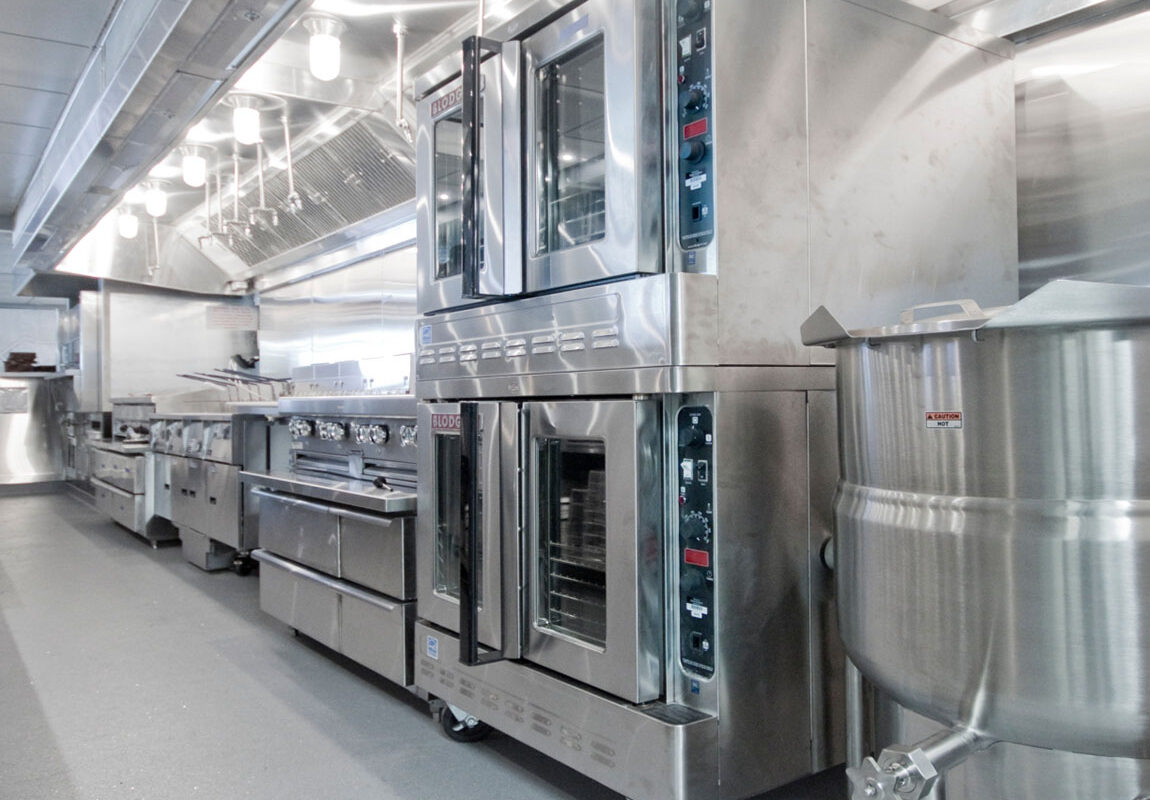Types of Food Service Equipment
Cooking Equipment
Cooking equipment forms the core of any commercial kitchen operation. It includes ranges, ovens, fryers, griddles, broilers, and other appliances used for food preparation. When choosing cooking equipment, consider the type of cuisine your restaurant serves and your expected meal volume.
For example, a pizza restaurant will need a large commercial oven that can bake multiple pies at once. A sandwich shop may only need smaller countertop Food Service Equipment like a panini press or griddle. High-volume, full-service restaurants usually invest in professional-grade equipment from manufacturers like Garland, Southbend, and Vulcan to ensure durability.
Refrigeration and Storage Equipment
No commercial kitchen is complete without adequate refrigerated storage. Walk-in coolers and freezers are essential for storing large quantities of raw and prepared foods at safe temperatures. Reach-in refrigerators and freezers are also useful for accessible storage behind the line.
When selecting refrigeration equipment, pay attention to capacity, temperature range, and features like adjustable shelving. Look for NSF certification to ensure food safety. Equipment made by True, Traulsen, and Delfield are top industry brands suitable for most operations.
Dishwashing Equipment
Commercial dishwashers are more heavy-duty versions of residential models, designed to handle high volumes of dirty dishes quickly and efficiently. Rack-type dishwashers are best for restaurants with limited space as they maximize loading capacity.
Conveyor dishwashers are the most productive option, continuously moving racks through washing cycles. Select a model that matches yourexpected meal volumes and plate/glassware capacity. A 3-compartment sink is also required by code for manually washing and sanitizing cookware and equipment.
Mixing and Portioning Equipment
For operations that prepare large batches of food like pizza dough or salad dressings, stand mixers, food processors, and sheet pans are essential. Commercial blenders allow preciseportioning of dressings, sauces, and smoothies.
Automatic portion scales streamline tasks like measuring ounces of chicken or scoops of ice cream. Robot coupes and food slicers speedily prep ingredients for cooking or assembly. Select equipment powered enough for your intensive mixing and portioning needs.
Heating and Serving Equipment
Back-of-house equipment like combi ovens, steamers and kettles help efficiently produce large batches of food. When buying serving equipment, focus on user-friendly, space-saving designs suited to your style of service – cafeteria, buffet or a la carte.
Chafing dishes, food warmers, trays and racks keep prepared dishes appetizing while waiting to be served. Self-contained cold food units neatly store and display salads, sandwiches and desserts. Carts, counters and islands facilitate easy access in the front-of-house.
Beverage Equipment
No restaurant is complete without the right coffee, espresso and drink equipment. For cafes focused on beverages, consider an espresso machine along with a grinder, steam wand and milk frother. Thermal coffee brewers produce perfect pots of drip coffee time after time.
Cold drink dispensers like soda fountains ensure consistent mixes of sodas, juices, iced teas and more. Self-contained units neatly chill and serve bottled drinks. Ice machines must produce plenty of bullet-shaped cubes for maximum surface area to chill beverages quickly.
Factors to Consider When Buying Food Service Equipment
Budget
Equipment purchases are significant investments, so it’s important to establish a realistic budget based on your startup costs and projected sales volumes. Balance quality with affordability by checking used/refurbished options and negotiating with suppliers.
Durability and Warranties
Commercial kitchen gear will see heavy daily use, so durability is key. Stainless steel construction stands up best to wear and tear. Request information on expected lifespan and warranties before committing to a model. Longer time periods signal higher quality.
Energy Efficiency
With potentially round-the-clock operation and multiple appliances running simultaneously, energy efficiency impact your bottom line. Ideally, select Energy Star rated equipment to cut costs on electric bills and future-proof your choices.
Maintenance Requirements
Consider not just the purchase price but ongoing maintenance needs like filter changes, calibrations and repairs when budgeting. Ask suppliers about standard service timeslines and parts availability expectations. Easier to service = less downtime.
Footprint and Installation
Measure your available kitchen space realistically and leave ample clearance around units. Wall ovens/cooktops may require gas lines while ice machines/dishwashers need plumbing and drainage. factor installation complexity into overall costs.
Certifications
Look for NSF certification assuring food handling safety on any equipment directly touching food. UL listings safely pass electrical inspections. Ask suppliers for all compliance paperwork to avoid red tape delaysing us.
User Manuals and Training
Clear, well-written manuals from manufacturers demystify daily operation and maintenance. Request in-person training sessions at purchase on complex equipment from knowledgeable sales reps
Resale Value
While not a primary concern, choosing name brands increases odds of recouping a percentage of original investment if upgrading or selling operations in the future. Quality retains value longer term.
Choosing the Right Supplier
Establish relationships with restaurant equipment dealers and distributors with knowledge and experience in your region. Reputable providers offer site assessments, guidance on specifications and financing solutions. Ask other operators for referrals to trusted suppliers in your area.
By carefully considering all factors from types of equipment to budget to installation and maintenance specifics before making purchases, you set your restaurant or cafe up for continued success in the long run through optimized kitchen operations and return on investment. Selecting the right food service equipment is an important strategic decision.
*Note:
1. Source: Coherent Market Insights, Public sources, Desk research
2. We have leveraged AI tools to mine information and compile it




